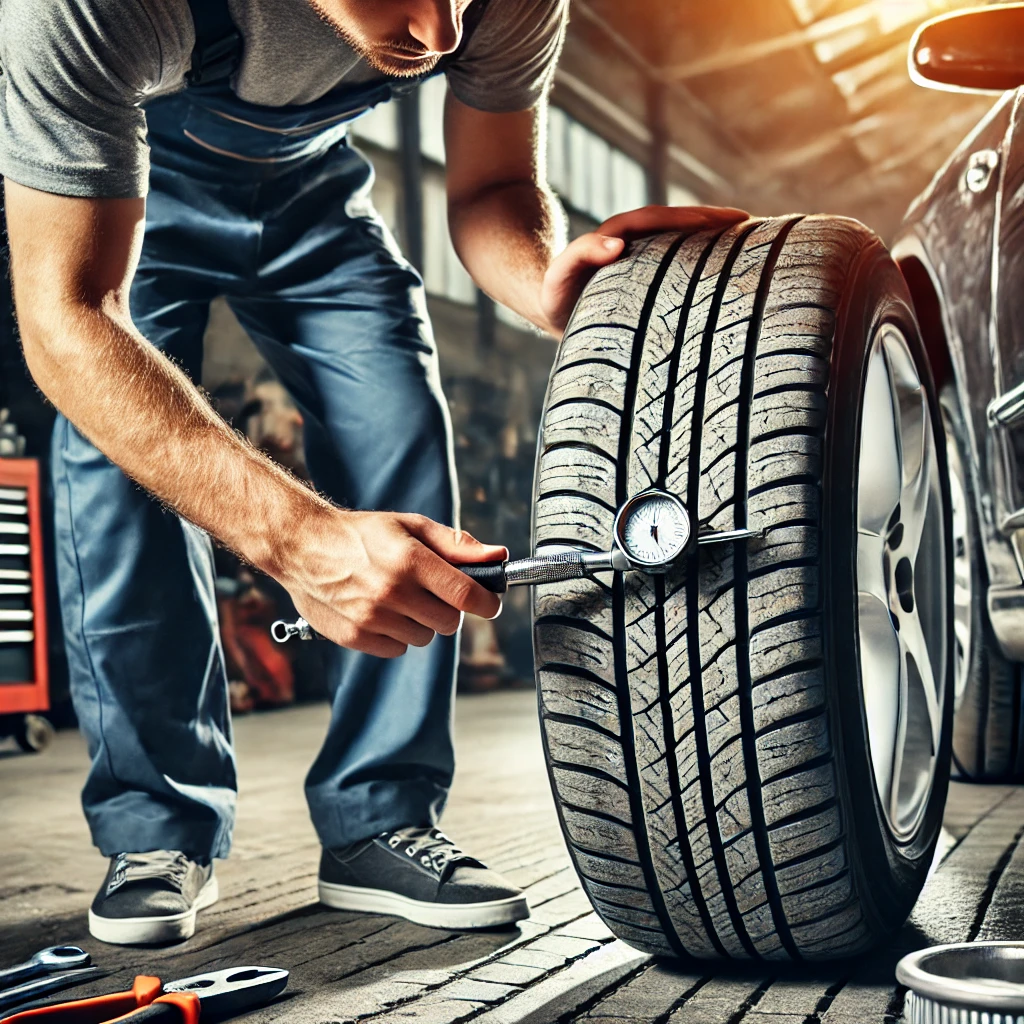Introduction
Tyres are one of the most critical components of your vehicle, directly impacting safety, fuel efficiency, and overall performance. However, they are also subject to wear and tear due to constant contact with the road. Regular inspection and timely replacement of tyres are crucial for maintaining safe driving conditions and optimizing your car’s performance.
Signs Your Tyres Need Replacing
1. Low Tread Depth
Tyre tread plays a vital role in maintaining grip on the road, especially during wet or slippery conditions. A tread depth of less than 1.6mm is considered unsafe and often illegal. Many modern tyres have tread wear indicators to help you monitor their condition.
2. Uneven Wear Patterns
Uneven tread wear can be a sign of poor alignment, improper inflation, or suspension issues. Regular rotation and proper inflation can extend tyre life and reduce uneven wear.
3. Visible Damage
Inspect tyres for cracks, cuts, bulges, or punctures. Such damages weaken the tyre’s structure and increase the risk of blowouts.
4. Age of the Tyres
Even if tyres look fine, they deteriorate with time. Most manufacturers recommend replacing tyres every 6–10 years, regardless of usage.
Risks of Driving on Worn Tyres
- Reduced Traction: Worn-out tyres lose their ability to grip the road effectively, increasing the likelihood of skidding.
- Longer Stopping Distance: Bald tyres significantly increase stopping distances, especially on wet surfaces.
- Tyre Blowouts: A blowout at high speed can lead to a catastrophic loss of control.
The Benefits of Replacing Worn Tyres
1. Enhanced Safety
New tyres provide optimal grip and reduce the chances of accidents, even in challenging driving conditions.
2. Improved Fuel Efficiency
Proper tyres lower rolling resistance, reducing fuel consumption and saving money.
3. Better Handling
Replacing old tyres restores the car’s handling and ensures a smoother driving experience.
4. Legal Compliance
Driving on tyres below the legal tread limit can result in fines and points on your driving license.
Tips for Maintaining Tyre Health
- Check Tyre Pressure Monthly
Maintaining the correct pressure prevents excessive wear and improves fuel efficiency. - Rotate Tyres Regularly
Rotating tyres every 5,000–7,000 miles promotes even wear. - Inspect for Damage
Perform visual inspections for cuts, cracks, or embedded objects. - Monitor Tread Depth
Use a tread depth gauge or the “coin test” to ensure your tyres are safe. - Invest in Quality Tyres
High-quality tyres may have a higher upfront cost but offer better performance and durability.

